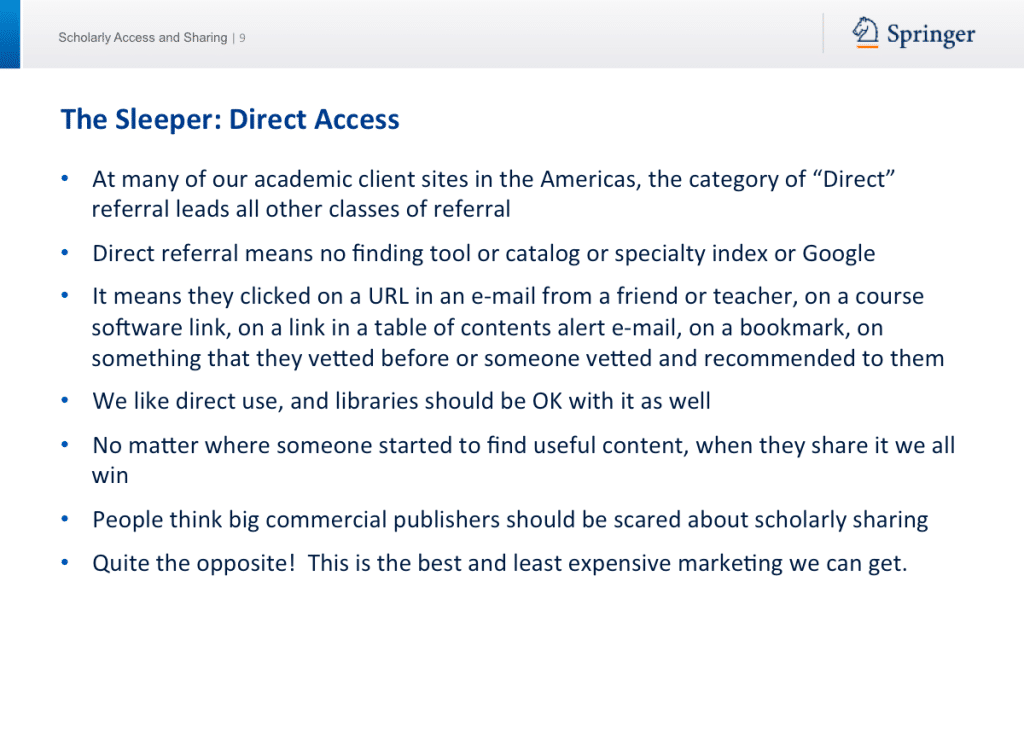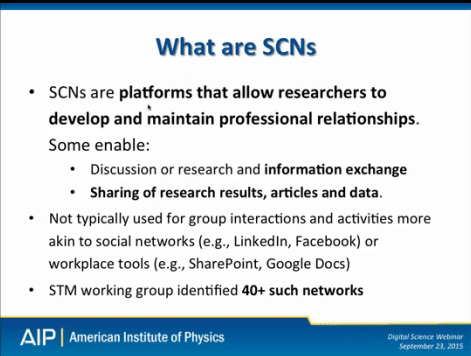Subscribe to our newsletter
The Evolution of Scholarly Access and Sharing: A Summary
As part of a continuing series, we recently broadcast our third Digital Science webinar on the evolution of scholarly access and sharing. The aim of these webinars is to provide the very latest perspectives on key topics in scholarly communication.
Attendees were able to learn about the ways readers access and engage with content, why groups like the STM Association’s Scholarly Collaboration Networks (SCN) Working Group were set up and their motivations, and the importance of open access to scholarly research communication.
Laura Wheeler (@laurawheelers), Community Manager at Digital Science, introduced the webinar and gave a brief overview of the esteemed panel.
The discussion was led and moderated by Alex Hodgson (@alexhodgson), Director of Marketing at ReadCube, who framed the discussion by explaining that technology advances and changing expectations have altered the landscape of scholarly content.
The first panel member to speak was Robert W. Boissy (@RWBoissy), Manager of Account Development and Strategic Alliances at Springer, who discussed his experience of looking at what happens to content after it is purchased and how readers discover, access and engage with content.
Robert explained that publishers used to not know, or perhaps not care that much, about how users were engaging with their content, post-purchase. However, thing have changed, now usage and engagement has become of much more interest to publishers.
In his professional role Robert works with libraries and institutions to examine how their content is being used, looking at the different aspects of post-purchase experience and support, ensuring that the communities they serve are getting the most of out of their purchased content. For example, publishers increasingly need to know about how their content is performing with search and discovery tools. There can be a tension between maximising the overall usage of your content and knowing as much as possible about how your content is being used.
 Google and Google Scholar drive a lot of visits but also a lot of denials, whereas library tools drive fewer visits but also much fewer denials as well as higher downloads per minute.
Google and Google Scholar drive a lot of visits but also a lot of denials, whereas library tools drive fewer visits but also much fewer denials as well as higher downloads per minute.
Direct traffic to content means traffic that’s not from a discovery tool, not from Google or any other form of search and not from a catalog or index. Direct traffic is clicking on a URL shared by a colleague or a friend, or a link contained in course notes or a bookmarked link.
Scholarly sharing is an aspect of post-purchase activity and engagement that is often not known about because it is much more difficult to measure. But publishers and libraries should be OK with direct traffic. It can be in the top three sources of traffic and it is the best and least expensive form of marketing that publishers can get! So publishers definitely shouldn’t be scared of the principle of scholarly sharing, they should want to be good at it.
Next to present was Fred Dylla, Executive Director Emeritus of the American Institute of Physics and Project Lead for the STM Association’s Scholarly Collaboration Networks (SCN) Working Group. Fred gave an overview of the origins and aims of the SCN Working Group and the valuable work they have done.
What are SCNs? Fred described them as platforms that enable researchers to develop and maintain professional relationships. In addition some SCNs enable the discussion of research and the sharing of results, articles and data. Fred’s STM Working Group identified some 40+ different SCNs and identified that they are growing in popularity, especially with regards to the “big three” of Academia.edu, ResearchGate and Mendeley.
These SCNs are substantial means of for the sharing of articles, although it’s worth noting that the most popular general tool for sharing documents is Dropbox, over 1 billion documents are shared per day using it.
Fred pointed out that SCNs are really nothing new. They can be seen as a 21st century embodiment of a standard academic practices, a practice that has been around for as long as there has been scientific journals and papers.
However, in the view of SCN Working Group, the current situation around article sharing and SCNs is ambiguous and needs simplification, something that would be beneficial for all stakeholders. The SCN Working Group worked to produce a draft set of voluntary principles for article sharing on SCNs and conducted an open consultation on them. In their own words,
“The aim of this consultation was to facilitate discussion by all stakeholders in order to establish a core set of principles that clarify how, where and what content should be shared using these networks and sites, and to improve this experience for all. Our hope for this initiative is for publishers and scholarly collaboration networks to work together to facilitate sharing, which benefits researchers, institutions, and society as a whole.”
The key recommendation was that the principles should be clear, simple, uniform. An explanation of the changes made to the draft principles, as a result of the public consultation, can be found online here.
John Wilbanks (@wilbanks), Chief Commons Officer at Sage Bionetworks, was the final member of the panel to present. John talked about open science, in particular how open science can be implemented as a practical scheme of methods and processes, from data collection through to data analysis, and the way this relates to collaboration and sharing.
John pointed out that it is often more accurate to think of research as something carried out by communities, not just individual researchers or even individual labs, and explained how this is especially true in the life sciences. Individual researchers and labs interact and collaborate with other researchers and labs, these relationships are highly productive and offer plenty of scope for innovation. John cited The Cancer Genome Atlas (TGCA) Research Network and the Pan-Cancer analysis project as an example of the effectiveness of systematic, co-ordinated collaboration and the scholarly sharing associated with that.




